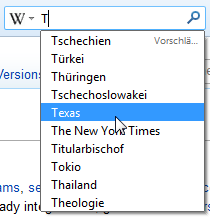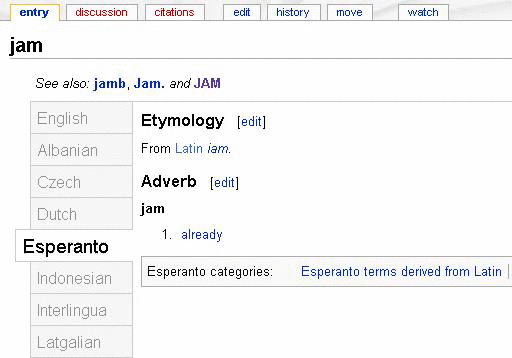|
Blisk (browser)
Blisk is a freemium Chromium-based web browser that aims to improve productivity and code quality by providing a wide array of tools for Web development and testing for different type of devices: desktop, tablet and mobile. History The latest generation of Blisk applications started with the release of version 14 which was announced by the Blisk team on January 15, 2021. With version 14, Blisk started using the new reworked application core, enabling to use simultaneously multiple devices in a synchronized mode (devices follow each other by URL and Scroll position), full support of single-page applications, the possibilities to simulate different mobile networks, and control the device caching. The initial beta release of Blisk for Linux was announced on April 10, 2021, public Linux release and support of Linux-based OS (Ubuntu, Debian, Fedora, OpenSUSE) was announced by the Blisk team on May 7, 2021. Features Blisk is the same as Chromium and Google Chrome in that it fe ... [...More Info...] [...Related Items...] OR: [Wikipedia] [Google] [Baidu] |
MacOS
macOS (; previously OS X and originally Mac OS X) is a Unix operating system developed and marketed by Apple Inc. since 2001. It is the primary operating system for Apple's Mac computers. Within the market of desktop and laptop computers it is the second most widely used desktop OS, after Microsoft Windows and ahead of ChromeOS. macOS succeeded the classic Mac OS, a Mac operating system with nine releases from 1984 to 1999. During this time, Apple cofounder Steve Jobs had left Apple and started another company, NeXT, developing the NeXTSTEP platform that would later be acquired by Apple to form the basis of macOS. The first desktop version, Mac OS X 10.0, was released in March 2001, with its first update, 10.1, arriving later that year. All releases from Mac OS X 10.5 Leopard and after are UNIX 03 certified, with an exception for OS X 10.7 Lion. Apple's other operating systems (iOS, iPadOS, watchOS, tvOS, audioOS) are derivatives of macOS. A promi ... [...More Info...] [...Related Items...] OR: [Wikipedia] [Google] [Baidu] |
Web Testing
Web testing is software testing that focuses on web applications. Complete testing of a web-based system before going live can help address issues before the system is revealed to the public. Issues may include the security of the web application, the basic functionality of the site, its accessibility to disabled and fully able users, its ability to adapt to the multitude of desktops, devices, and operating systems, as well as readiness for expected traffic and number of users and the ability to survive a massive spike in user traffic, both of which are related to load testing. Web application performance tool A web application performance tool (WAPT) is used to test web applications and web related interfaces. These tools are used for performance, load and stress testing of web applications, web sites, web API, web servers and other web interfaces. WAPT tends to simulate virtual users which will repeat either recorded URLs or specified URL and allows the users to specify numbe ... [...More Info...] [...Related Items...] OR: [Wikipedia] [Google] [Baidu] |
Autocomplete
Autocomplete, or word completion, is a feature in which an application predicts the rest of a word a user is typing. In Android and iOS smartphones, this is called predictive text. In graphical user interfaces, users can typically press the tab key to accept a suggestion or the down arrow key to accept one of several. Autocomplete speeds up human-computer interactions when it correctly predicts the word a user intends to enter after only a few characters have been typed into a text input field. It works best in domains with a limited number of possible words (such as in command line interpreters), when some words are much more common (such as when addressing an e-mail), or writing structured and predictable text (as in source code editors). Many autocomplete algorithms learn new words after the user has written them a few times, and can suggest alternatives based on the learned habits of the individual user. Definition Original purpose The original purpose of word predic ... [...More Info...] [...Related Items...] OR: [Wikipedia] [Google] [Baidu] |
Toolbar
The toolbar, also called a bar or standard toolbar (originally known as ribbon) is a graphical control element on which on-screen icons can be used. A toolbar often allows for quick access to functions that are commonly used in the program. Some examples of functions a toolbar might have are open file, save, and change font. Toolbars are usually distinguished from palettes by their integration into the edges of the screen or of other windows. This can result in wasted space if multiple underpopulated bars are stacked atop each other or interface inefficiency if overloaded bars are placed on small windows. Variants There are several user interface elements derived from toolbars: * An address bar, location bar or URL bar is a toolbar that mainly consists of a text box. It typically accepts URLs or file system addresses. They are found in web browsers and file managers. * A breadcrumb or breadcrumb trail allows users to keep track of their locations within a program or a file sys ... [...More Info...] [...Related Items...] OR: [Wikipedia] [Google] [Baidu] |
Tab (interface)
In interface design, a tab is a graphical user interface object that allows multiple documents or panels to be contained within a single window, using tabs as a navigational widget for switching between sets of documents. It is an interface style most commonly associated with web browsers, web applications, text editors, and preference panes, with window managers, especially tiling window managers, being lesser known examples. Tabs are modeled after traditional card tabs inserted in paper files or card indexes (in keeping with the desktop metaphor). Tabs may appear in a horizontal bar or as a vertical list, of which the former takes typically less screen space whereas the latter can show more items at once while still having space for individual titles. Horizontal tabs may have multiple rows. Tabs may be organizable by changing their order through drag and drop or creating a separate window from an existing tab. Implementations may support range-selecting multiple tabs for ... [...More Info...] [...Related Items...] OR: [Wikipedia] [Google] [Baidu] |
User Interface
In the industrial design field of human–computer interaction, a user interface (UI) is the space where interactions between humans and machines occur. The goal of this interaction is to allow effective operation and control of the machine from the human end, while the machine simultaneously feeds back information that aids the operators' decision-making process. Examples of this broad concept of user interfaces include the interactive aspects of computer operating systems, hand tools, heavy machinery operator controls and process controls. The design considerations applicable when creating user interfaces are related to, or involve such disciplines as, ergonomics and psychology. Generally, the goal of user interface design is to produce a user interface that makes it easy, efficient, and enjoyable (user-friendly) to operate a machine in the way which produces the desired result (i.e. maximum usability). This generally means that the operator needs to provide minimal input ... [...More Info...] [...Related Items...] OR: [Wikipedia] [Google] [Baidu] |
Address Bar
In a web browser, the address bar (also location bar or URL bar) is the element that shows the current URL. The user can type a URL into it to navigate to a chosen website. In most modern browsers, non-URLs are automatically sent to a search engine. In a file browser, it serves the same purpose of navigation, but through the file-system hierarchy. Many address bars offer features like autocomplete and a list of suggestions while the address is being typed in. This auto-completion feature bases its suggestions on the browser's history. Some browsers have keyboard shortcuts to auto-complete an address. Features In addition to the URL, some address bars feature icons showing features or information about the site. For websites using a favicon (a small icon that represents the website), a small icon may be present within the address bar, a generic icon appearing if the website does not specify one. The address bar is also used to show the security status of a web page; various des ... [...More Info...] [...Related Items...] OR: [Wikipedia] [Google] [Baidu] |
OpenSUSE
openSUSE () is a free and open-source software, free and open source RPM Package Manager, RPM-based Linux distribution developed by the openSUSE project. The initial release of the community project was a beta version of SUSE Linux 10.0. Additionally the project creates a variety of tools, such as YaST, Open Build Service, openQA, Snapper, Machinery, Portus, KIWI (openSUSE), KIWI and OSEM. Product history In the past, the SUSE Linux company had focused on releasing the SUSE Linux Personal and SUSE Linux Professional box sets which included extensive printed documentation that was available for sale in retail stores. The company's ability to sell an open source product was largely due to the closed-source development process used. Although SUSE Linux had always been free software product licensed with the GNU General Public License (GNU GPL), it was only freely possible to retrieve the source code of the next release 2 months after it was ready for purchase. SUSE Linux' strate ... [...More Info...] [...Related Items...] OR: [Wikipedia] [Google] [Baidu] |
Fedora Linux
Fedora Linux is a Linux distribution developed by the Fedora Project. Fedora contains software distributed under various free and open-source licenses and aims to be on the leading edge of open-source technologies. Fedora is the upstream source for Red Hat Enterprise Linux. Since the release of Fedora 35, six different editions are made available tailored to personal computer, server, cloud computing, container and Internet of Things installations. A new version of Fedora Linux is released every six months. , Fedora Linux has an estimated 1.2 million users, including Linus Torvalds (), creator of the Linux kernel. Features Fedora has a reputation for focusing on innovation, integrating new technologies early on and working closely with upstream Linux communities. Making changes upstream instead of specifically for Fedora Linux ensures that the changes are available to all Linux distributions. Fedora Linux has a relatively short life cycle: each version is usually supp ... [...More Info...] [...Related Items...] OR: [Wikipedia] [Google] [Baidu] |
Debian
Debian (), also known as Debian GNU/Linux, is a Linux distribution composed of free and open-source software, developed by the community-supported Debian Project, which was established by Ian Murdock on August 16, 1993. The first version of Debian (0.01) was released on September 15, 1993, and its first stable version (1.1) was released on June 17, 1996. The Debian Stable branch is the most popular edition for personal computers and servers. Debian is also the basis for many other distributions, most notably Ubuntu. Debian is one of the oldest operating systems based on the Linux kernel. The project is coordinated over the Internet by a team of volunteers guided by the Debian Project Leader and three foundational documents: the Debian Social Contract, the Debian Constitution, and the Debian Free Software Guidelines. New distributions are updated continually, and the next candidate is released after a time-based freeze. Since its founding, Debian has been developed openly ... [...More Info...] [...Related Items...] OR: [Wikipedia] [Google] [Baidu] |
Ubuntu
Ubuntu ( ) is a Linux distribution based on Debian and composed mostly of free and open-source software. Ubuntu is officially released in three editions: ''Desktop'', ''Server'', and ''Core'' for Internet of things devices and robots. All the editions can run on the computer alone, or in a virtual machine. Ubuntu is a popular operating system for cloud computing, with support for OpenStack. Ubuntu's default desktop changed back from the in-house Unity to GNOME after nearly 6.5 years in 2017 upon the release of version 17.10. Ubuntu is released every six months, with long-term support (LTS) releases every two years. , the most-recent release is 22.10 ("Kinetic Kudu"), and the current long-term support release is 22.04 ("Jammy Jellyfish"). Ubuntu is developed by British company Canonical, and a community of other developers, under a meritocratic governance model. Canonical provides security updates and support for each Ubuntu release, starting from the release date and until ... [...More Info...] [...Related Items...] OR: [Wikipedia] [Google] [Baidu] |







